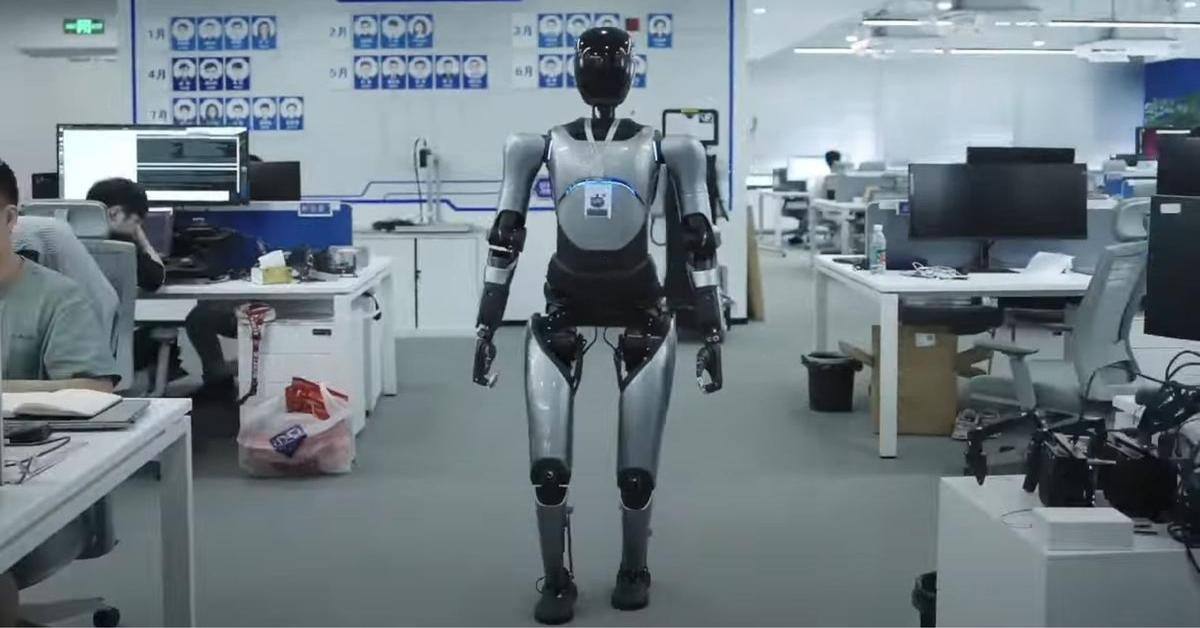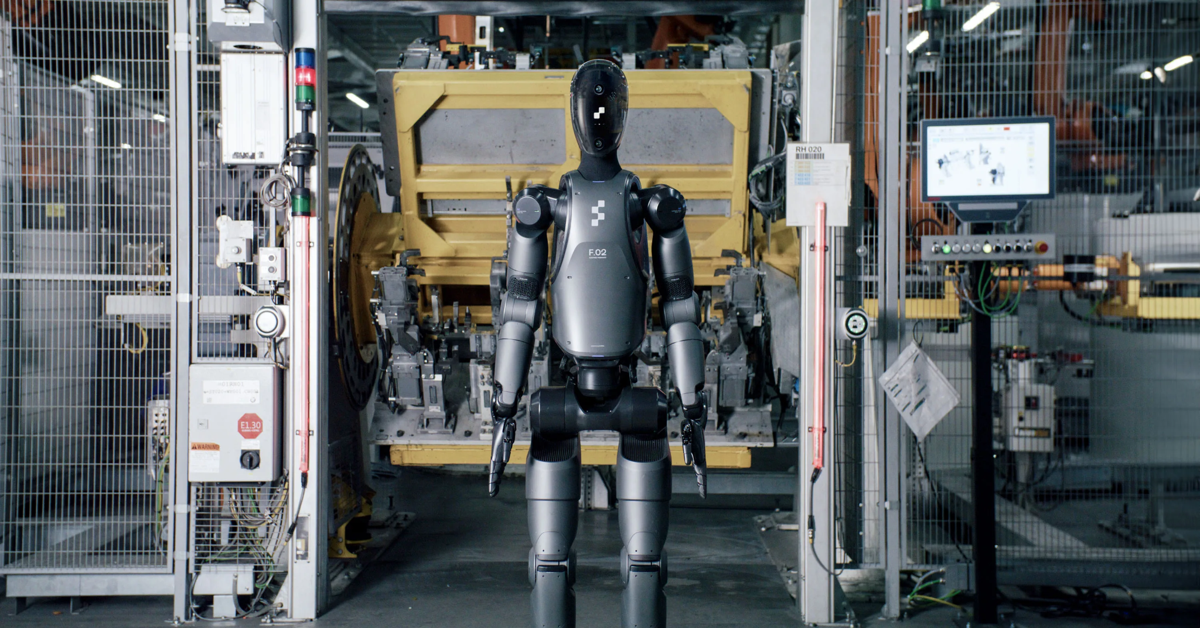
7 min read

“Data-Driven Optimism” in action: My goal is to offer you an antidote to all the pessimistic news you’re bombarded with every day.
Each week my team and I review dozens of science and tech advancements that are transforming the world...
Below, I’m sharing my top five breakthroughs in tech, science, and longevity that are currently on my mind—"What It Is” and “Why It’s Important / What I Think.”
If you find this valuable, please share it with your family and friends! Remember that we are living during the most extraordinary time ever.
I Translated My Podcast into Portuguese in 10 Minutes Using AI
What It Is: Imagine crafting a photorealistic avatar that speaks in your voice, translating your words into 40+ languages. That's HeyGen – the AI video sensation founded in 2020 by Joshua Xu and Wayne Liang. With 40,000 paying customers, HeyGen's text-to-speech magic transforms scripts into 300+ natural voices. Choose from 100+ AI avatars spanning diverse ethnicities and ages, all lip-syncing perfectly. From marketing to online education, HeyGen slashes video production time and costs by up to 90%. No camera, cast, or crew needed—just type and watch your studio-quality video materialize in minutes. It's not just a tool; it's a creative revolution, democratizing professional video content for businesses of all sizes. Welcome to the future of AI-human collaboration in video production!
Why It Matters / What I Think: Guess what? My Moonshots podcast is now available in Portuguese! If you want to see me and Michael Saylor speaking about Bitcoin fluently in Portuguese, you can check it out here. And we produced it in just 10 minutes. I'm fired up about HeyGen's game-changing AI tech! It's doing more than merely disrupting video production—it’s democratizing global reach. This is the future of creativity and cross-cultural communication, breaking down language barriers and spread ideas at light speed. The implications for education, business, and innovation are staggering.
China's Advanced Humanoid Robots
What It Is: In a bold move, China's robotics startup Agibot unveiled its family of 5 cutting-edge humanoid robots, directly challenging Tesla's Optimus. The lineup includes both wheeled and biped models for diverse applications. The star, Yuanzheng A2, stands 5'9", weighs 121 lbs, and can thread needles. Agibot aims to ship 300 units by 2024's end, touting superior commercialization skills. Meanwhile, Unitree showcased its G1 production-ready robot. This surge in Chinese robotics, with four startups revealing breakthroughs in a matter of days, intensifies the US-China AI race, signaling a new era in humanoid technology.
Why It Matters / What I Think: The humanoid robot race is on! At last count, I’m seeing more than 30 well-funded companies in the field, with a number coming from China. China has two major challenges. First, its economy has been predicated on “cheap” labor, which is going away. Second, it has a large and rapidly aging population following its one-child policy. Humanoid robots solve both of these problems, and along with Japan and South Korea, China *needs* humanoid robots. Agibot’s five new humanoid robots are impressive—especially the Yuanzheng A2. Its ability to perform delicate tasks like needle threading showcases how far we've come. This development, alongside advances from Tesla's Optimus and Figure's ambitious projections, signals an accelerating race in humanoid robotics. With Agibot aiming to ship 300 units by 2024, we're on the cusp of seeing these machines integrate into our lives, potentially transforming industries and freeing humans from undesirable jobs. It's technology driving abundance.
Biocomputers: The Brain-Powered Future of AI
What It Is: Swiss startup FinalSpark has demonstrated what it calls "biocomputers," a mix of brain organoids (tiny lab-grown clumps of brain tissue) interconnected with computer networks running variants of software. These are effective AI systems powered by human brain cells. For just $500 a month, you can now rent cloud access to these living computers. These biocomputers have a limited lifespan of about 100 days and live off glucose (the energy source of our human brains). FinalSpark seeks an environmentally sustainable way to support AI. "Our principal goal is artificial intelligence for 100,000 times less energy" than what's currently required to train state-of-the-art generative AI, says co-founder Fred Jordan. Every 0.5-millimeter-wide organoid is connected to 8 electrodes that electrically stimulate the neurons, connecting them to conventional computer networks. The neurons are selectively exposed to dopamine to mimic the human brain's natural reward system.
Why It Matters / What I Think: Whether this is a gimmick or a powerful research project, I find this effort important on two dimensions. First, we are likely to learn a lot on how to develop long-lasting, stable, brain computer interface electrodes through this type of work. Second, and more important, this project points out the *insane energy difference between our brains and today’s GPU enabled AI systems*.
For comparison purposes: The human brain consumes (in total) approximately 20 watts and delivers an estimated 1 exaFLOP (10^18 operations per second), with an energy efficiency of 50 billion-billion operations per joule. On the other hand, a GPU-powered AI System (e.g., NVIDIA DGX A100) consumes up to 6,500 watts, delivering up to 5 petaFLOPS (5 x 10^15 floating-point operations per second), with an energy efficiency of 769 million operations per joule. Conclusion: The human brain is about 325 times more energy-efficient than today’s GPU systems. To quote Elon on this: “There is a physics argument that (human brain) synapse activations take 1 to 2 orders of magnitude less energy than silicon transistors. That, of course, does not explain why a 10MW GPU cluster still cannot write a better novel than ~10W of brain power.”
Stanford Unlocks Alzheimer's Treatment via Brain Metabolism
What It Is: Stanford neuroscientists have cracked a vital link between Alzheimer's and disrupted brain metabolism through the kynurenine pathway. By blocking this pathway, they restored cognitive function in Alzheimer's mice, improving brain metabolism. The study, led by Dr. Katrin Andreasson, demonstrated a 30% improvement in spatial memory tests for mice treated with IDO1 inhibitors. This groundbreaking research bridges neuroscience and oncology, potentially fast-tracking existing cancer drugs for Alzheimer's treatment. With human trials on the horizon, this discovery offers hope to millions affected by this devastating disease, promising a new era in Alzheimer's care.
Why It Matters / What I Think: What I’m thrilled about is the hundreds of different approaches being taken to address Alzheimer’s and other forms of dementia. I truly believe it is only a matter of time before we learn the underlying cause(s) and how to prevent these crippling diseases. As we head towards Longevity Escape Velocity, allowing us to exceed 100 years old, we need to address this urgently. Today, the probability of dementia increases with age dramatically. Ages 65-74: the prevalence of dementia is 3% to 5%. Ages 75-84: the risk of dementia rises to 10% to 17%. Ages 85 and Older: the probability of dementia is estimated between 25% and 50%.
If this Stanford team is successful, by targeting brain metabolism through the kynurenine pathway, we're not just treating symptoms—we’re addressing a root cause of cognitive decline.
AI-Engineered Proteins Revolutionize Biotech with Dynamic Structures
What It Is: In a groundbreaking study, Dr. David Baker's team at the University of Washington harnessed AI to design novel proteins with unprecedented shape-shifting capabilities. Proteins, nature's molecular workhorses, typically rely on complex biological switches. The researchers created proteins with AI-designed hinges that bend and assemble into various structures when exposed to a molecular "effector," then disassemble when it's removed. Using advanced AI systems, they achieved a 40% success rate in creating water-soluble proteins. This breakthrough enables potential applications in drug delivery, biosensing, and synthetic biology. Dr. A. Joshua Wand of Texas A&M University called it a "startling advance," opening new possibilities in biotechnology beyond nature's current repertoire.
Why It Matters / What I Think: This work represents the early stages of “nanotechnology”, humanity’s ability to build atomic-scale robot assemblers. This concept of nanotech, first discussed by Prof. Richard Feynman in his famous 1959 Caltech lecture, “There is plenty of room at the bottom.” Feynman’s lecture was followed up by the profound work of Eric Drexler in his 1986 book Engines of Creation. Dr. David Baker's ability to design switchable proteins using AI that can assemble, disassemble, and transform on command is a major step in this direction. Baker’s work is also a significant step in in the realm of longevity. Imagine targeted drug delivery systems, advanced biosensors, and customizable cellular circuits. We're entering an era where we can engineer biology with unprecedented precision, potentially revolutionizing disease treatment and extending healthspan. This is a crucial step towards mastering our biology and reaching Longevity Escape Velocity by 2033.
Live Abundantly,
Peter H. Diamandis, MD
Want to learn about how to increase your healthspan? And identify the top longevity-related investment opportunities available?
If yes, then consider joining me on my 2024 Platinum Longevity Trip.
I'm running two VIP trips I call my “Platinum Longevity Trip” covering top scientists, startups, labs, and CEOs in San Francisco and San Diego. I do the same trip twice for up to 40 participants: Sept. 11 - 15, 2024 or Oct. 9 - 13, 2024.
Each trip is a 5-Star/5-Day deep dive into the cutting-edge world of biotech/longevity and age-reversal.
We’ll cover everything from Advanced Regenerative Medicine (AI Drug Discovery, CRISPR, Gene Therapies, etc.) and Disease Management Breakthroughs (Cancer, Genetic Diseases, Diabetes, etc.) to the latest research on the Longevity Basics including how to improve sleep, diet, exercise, and supplements, among others.
You’ll meet with 35 of the most extraordinary scientists, entrepreneurs and leaders shaping the longevity revolution. Here are just a few of them:
-
Hal Barron, MD: CEO, Altos Labs (Backed by Yuri Milner & Jeff Bezos)
-
Joe Betts-LaCroix: CEO, Retro Biosciences (Backed by Sam Altman)
-
Dr. Catriona "Cat" Jamieson, MD, PhD: UCSD (Cancer Stem Cells research)
-
Blake Byers, PhD: Co-Founder & CEO, NewLimit (Backed by Coinbase CEO Brian Armstrong + Blake Byers)
-
Eric Verdin, MD: CEO, Buck Institute (World’s leading Longevity Institute)
-
Stefanie Strathdee, PhD: UCSD (Global authority on Phage research)
-
Helen Messier, PhD/MD: Chief Medical Officer, Fountain Life
-
And many more!
Both trips are identical (capped at 40 participants per trip), during which I spend all 5 days with you as your private guide and provocateur. Through this personalized, action-packed program, my mission is to give you exclusive, first-hand exposure to the major players, scientists, companies, and treatments in the longevity and vitality arena.
Here's what you get:
-
All your questions about longevity answered
-
Early investment opportunities to extraordinary biotech startups
-
First-hand insights into the latest longevity breakthroughs and research
-
Early access to advanced diagnostics, state-of-the art therapeutics
-
Exclusive wellness experiences including HIIT/equipment workouts, wearable devices, meditation & breathwork
If you want to learn more about the Platinum Longevity Trip, go here, indicate your interest and we’ll set up an interview!
Viome tells me exactly what foods I should be avoiding or eating based on my test results. I no longer have to think about what supplements I should be taking because they custom make the supplements with the nutrients I need and with the dosage I need.
The results have been stellar—I sleep better, have more energy, and no longer experience digestive issues.
Viome’s groundbreaking research paper in iScience blew me away with its ability to measure biological markers of aging using 1 million samples. Their paper in the American Journal of Lifestyle showed over 30% improvements in diabetes, weight loss, depression, IBS, and anxiety, proving the effectiveness of their precision approach.
I highly recommend Viome to everyone for their health and longevity. Order Viome today.
A Statement From Peter:
My goal with this newsletter is to inspire leaders to play BIG. If that’s you, thank you for being here. If you know someone who can use this, please share it. Together, we can uplift humanity.
Disclaimer:
Peter H. Diamandis, MD, currently serves as the Founder and Chairman of the Board of the XPRIZE Foundation. All views expressed on his “Moonshots Podcast,” “Abundance Blog,” and on his social channels are strictly his own and do not represent the official views of XPRIZE. These views are his own and are not legal, financial, or medical advice and they are not in any way connected with the XPRIZE Foundation’s work or its competitions.
Topics: Robotics Abundance Entrepreneurship Longevity Abundance 360 Artificial Intellegence nanobots









